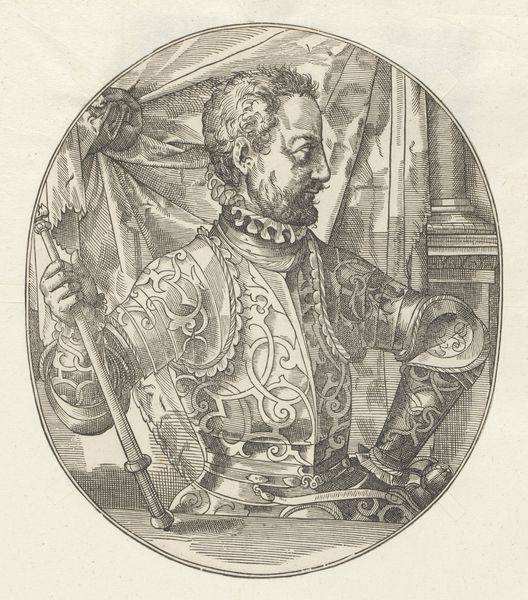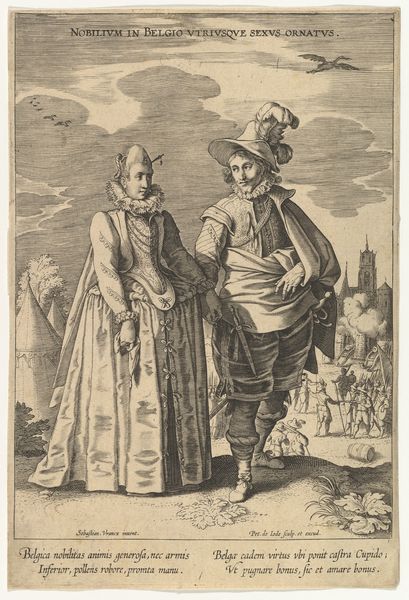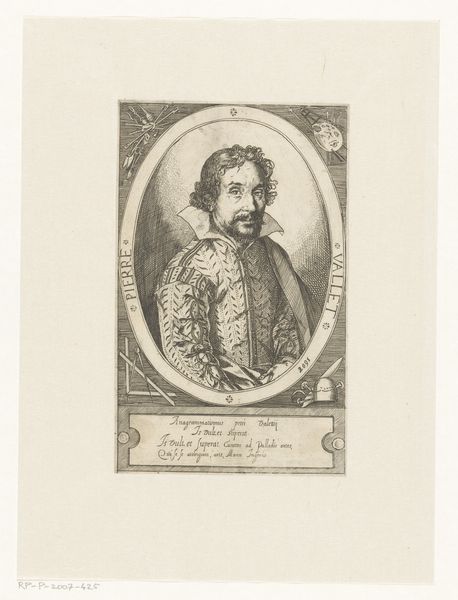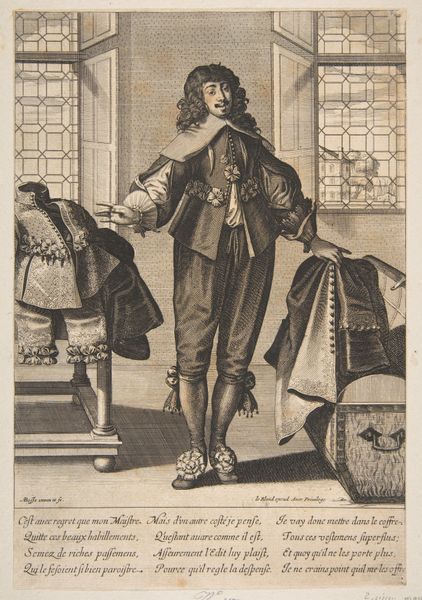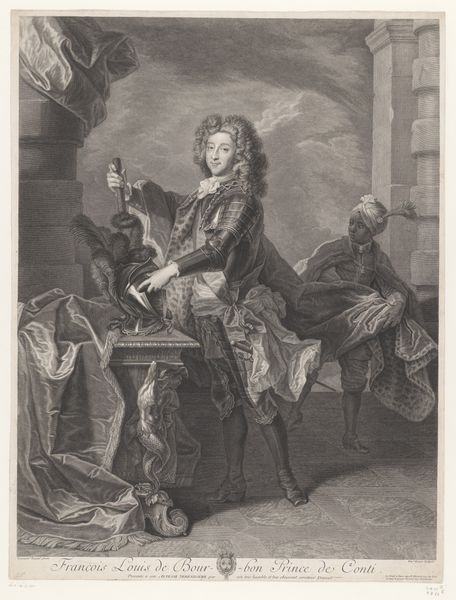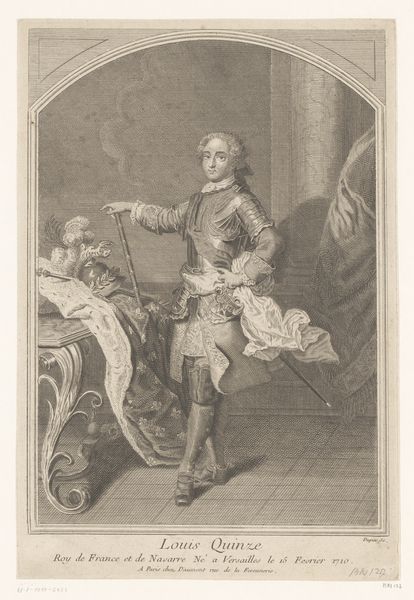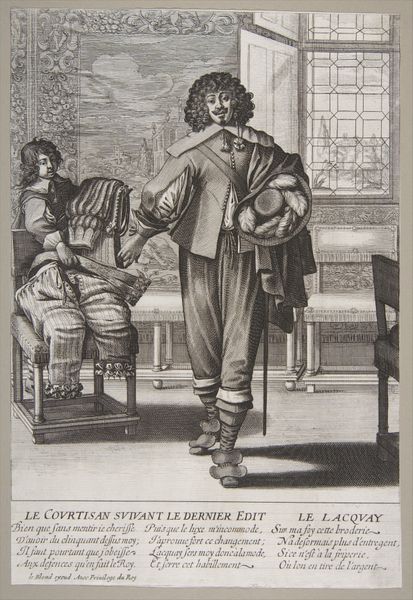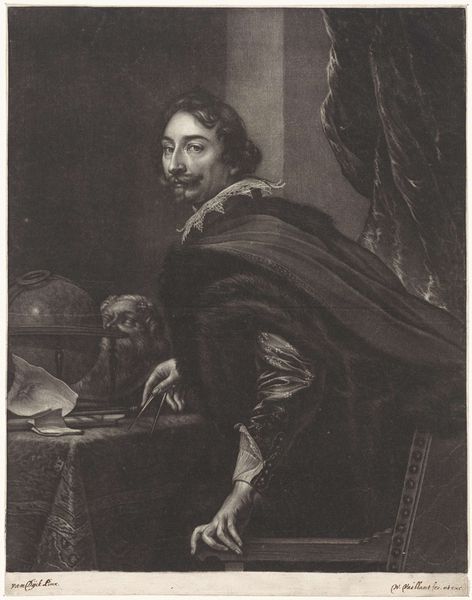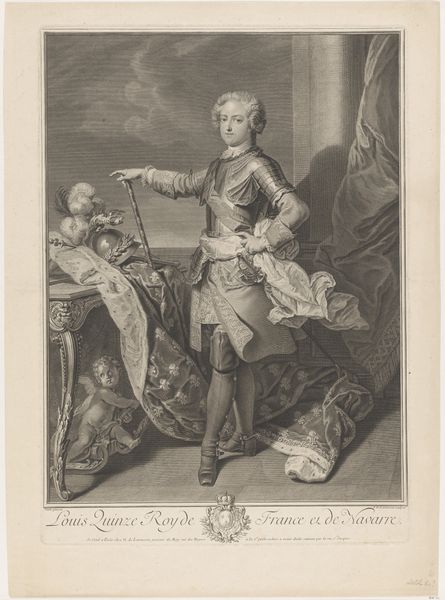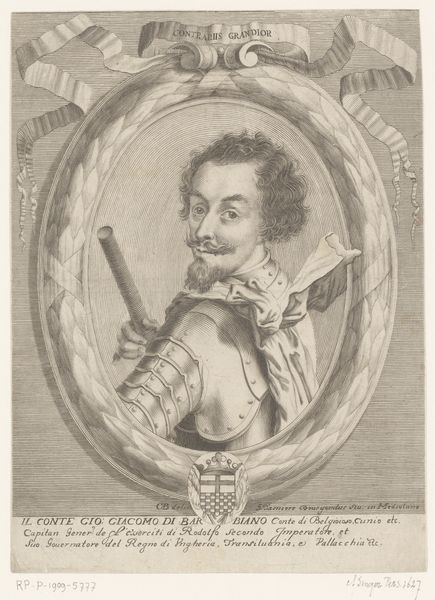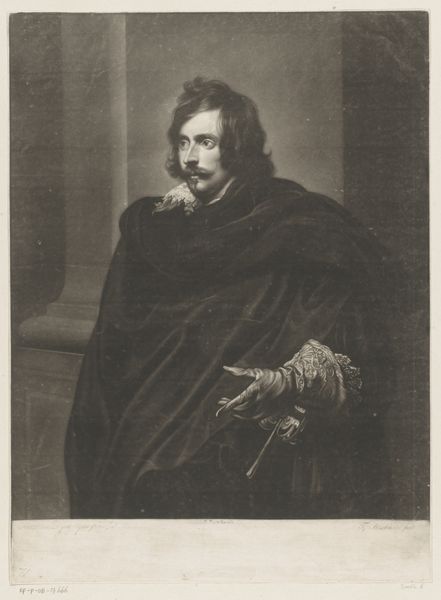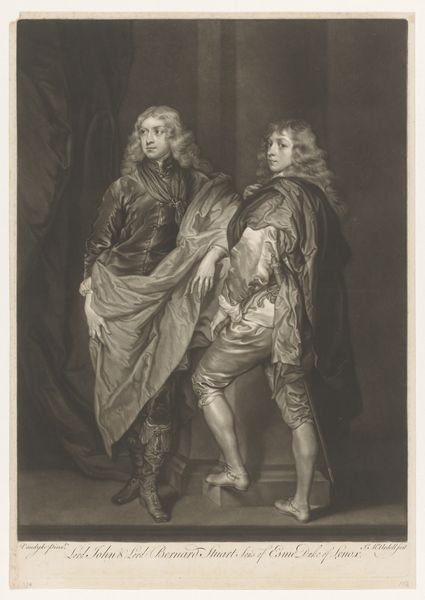
drawing, print, engraving
#
drawing
#
baroque
# print
#
men
#
portrait drawing
#
engraving
Dimensions: Plate: 11 3/4 × 9 in. (29.9 × 22.8 cm) Sheet: 12 1/16 × 9 5/16 in. (30.7 × 23.6 cm)
Copyright: Public Domain
Curator: Oh, there’s something so immediate and charming about this. It reminds me of a backstage snapshot, even though I know it’s from 1646. Editor: We're looking at "Lucas and Cornelius van Wael," an engraving by Wenceslaus Hollar, currently residing at the Metropolitan Museum of Art. Hollar was a master printmaker known for his detailed depictions of people and places. Here, we see two brothers, presumably artists themselves. Curator: Yes, the elder with the intense gaze resting his arm on the younger brother's chair, like he is protecting or overseeing him, which says a lot about brotherhood dynamics. The artist captured a complex relationship, more than just a simple portrait. Editor: Absolutely. Let's consider the visual language. The younger brother, seated, is draped in rich fabrics, drawing our attention to him initially. That large drape looks as if he’s hiding a lot, but I can’t know for sure…it makes him so expressive! Curator: Right. It's almost baroque in its extravagance. These details signal wealth and status but also allude to an internal landscape, wouldn't you say? Clothing historically has been used to mark certain positions in society, like power, but they also signal inner emotions like protection, defense, hiding, covering up. The elder is further back and his fabrics, while lovely, aren't as pronounced as his brother’s. Editor: It brings forward some sense of internal conflict or dynamic that makes one wonder who is more tortured in reality. One brother looks as though he’s putting on a brave face while the other might be at peace, despite his family associations! And knowing this work came about during the Baroque period when there was significant upheaval over everything, I am curious about what types of social commentary Hollar was trying to depict. Curator: True, there's definitely an inherent symbolism there; the composition emphasizes the push and pull between individuals who are at once bonded together, but seemingly opposed to each other too. Editor: It really holds my attention and draws me into the unravelling of each element piece by piece. Curator: Indeed. Hollar provides an emotional complexity beyond just the surface level of portraiture. Editor: Precisely. This exploration only enriches the appreciation for Hollar's skill, which elevates this work beyond simple likeness into something profoundly expressive.
Comments
No comments
Be the first to comment and join the conversation on the ultimate creative platform.

